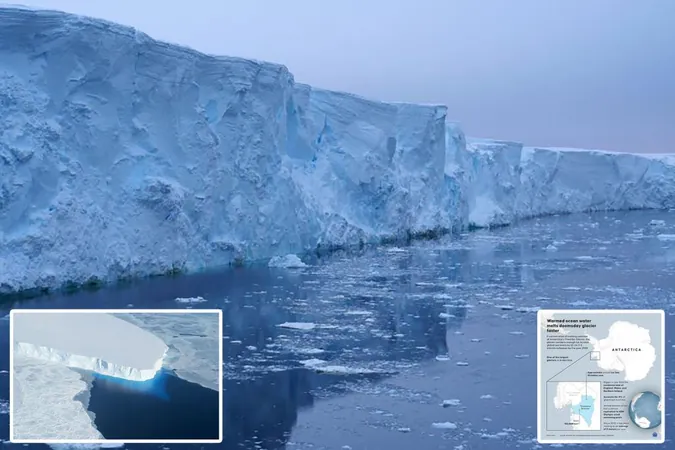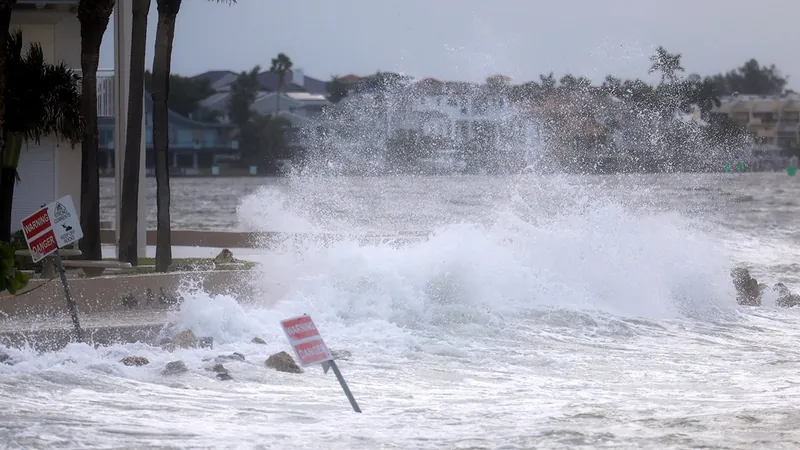
Doomsday Glacier Faces Imminent Collapse, Threatening Catastrophic Sea Level Rise
2024-09-23
The Chilling Revelation
As scientists peer into the chilling depths of Antarctica, an alarming revelation has emerged: the renowned Thwaites Glacier—often dubbed the "Doomsday Glacier"—is melting far more quickly than previously feared. This rapid decline could unleash catastrophic sea level rises, posing a dire threat to coastal cities around the world.
Experts' Concerns
Glaciologist Eric Rignot, part of the International Thwaites Glacier Collaboration (ITGC), expressed his grave concerns, stating, “I remain very worried that this sector of Antarctica is already in a state of collapse.” The ITGC has been diligently monitoring this ominous glacier since 2018, employing cutting-edge ice-breaking expeditions and advanced underwater robots to decode its secrets.
Alarming Findings
The alarming findings indicate that warm ocean water is infiltrating beneath the glacier, exacerbating its decline. Thwaites Glacier, which spans approximately 74,000 square miles (comparable to Florida), has been receding for over 80 years, with an accelerated decline observed in the past three decades. Marine geophysicist Rob Larter from the British Antarctic Survey highlighted this concerning trend, noting that predictions indicate further and faster retreat in the years to come.
Potential Consequences
Recent forecasts suggest that the Thwaites Glacier could completely collapse within the next two centuries, leading to a staggering rise in global sea levels by as much as ten feet. Such an increase would jeopardize major coastal cities, including Miami, Florida, and London, UK, leaving millions of residents at risk.
Investigating the Glacier's Dynamics
In an effort to understand the glacier's dynamics, researchers deployed a high-tech underwater robot known as Icefin to probe the glacier's grounding line—the critical point where ice elevates from the seabed and begins to float, making it particularly susceptible to melting. Analyzing the images transmitted by Icefin revealed the alarming process underway: warm seawater is making its way into deep crevices of the ice, with penetration observed at depths exceeding six miles.
The Melting Process
The impetus for this rapid melting process can be traced back to a powerful El Niño event in the 1940s, which likely initiated the recession of the glacier. Despite this grim outcome, researchers have found a slight glimmer of hope. Computational models indicate that the extreme likelihood of a cascading failure of ice shelves may be lower than previously thought.
The Future of Thwaites Glacier and Beyond
However, existing projections maintain that both Thwaites and the Antarctic Ice Sheet behind it could face substantial diminishment by the 23rd century, regardless of any global efforts to curb fossil fuel consumption. Researchers remain committed to unraveling the complex interactions between glaciers and the Southern Ocean to create more accurate predictive models for this climate crisis.
Conclusion
As Rignot candidly stated, “While progress has been made, we still have deep uncertainty about the future.” The fate of Thwaites Glacier could herald one of the most significant environmental challenges of our time, demanding immediate attention and action from the global community.
A Call to Action
Are we on the brink of a global catastrophe? The clock is ticking, and the melting Doomsday Glacier is sending a chilling message we can't afford to ignore.



 Brasil (PT)
Brasil (PT)
 Canada (EN)
Canada (EN)
 Chile (ES)
Chile (ES)
 España (ES)
España (ES)
 France (FR)
France (FR)
 Hong Kong (EN)
Hong Kong (EN)
 Italia (IT)
Italia (IT)
 日本 (JA)
日本 (JA)
 Magyarország (HU)
Magyarország (HU)
 Norge (NO)
Norge (NO)
 Polska (PL)
Polska (PL)
 Schweiz (DE)
Schweiz (DE)
 Singapore (EN)
Singapore (EN)
 Sverige (SV)
Sverige (SV)
 Suomi (FI)
Suomi (FI)
 Türkiye (TR)
Türkiye (TR)